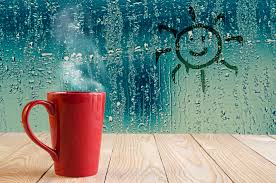-

At Comfort Heat & AC we want to help you understand more about humidity in your home and how to manage it.
First off what is humidity? Basically, it’s a way of measuring the amount of moisture in the air. Heat obviously plays a part in humidity but the focus is on the amount of moisture in your home.
There are dangers of high humidity levels: mildew and mould growth, dust mites, risks of asthma attacks, heatstroke, and dehydration. A sign for high humidity is when your rooms feel damp and wet.
So, how do you get rid of humidity at home? The main solution is to dry the air in your home. From developing good habits, the use of tools and even your own methods, you’ll be well-prepared to reduce any excess humidity in your house. If you have questions always call 403.849.7444 and we can answer any questions.
Change Habits
Without knowing it, there are daily routines we’ve developed that contribute to creating moisture. Here are different habits you can implement that not only get rid of humidity at home but also improve energy efficiency.
Most of these changes will be exchanging convenience for energy efficiency. This all depends on how far you’re willing to go to get rid of humidity at home.
Shower Less
Whether you like your showers at cooking temperature or taking your time, you’re contributing to your indoor humidity levels. The steam produced from your hot shower is a huge contributor to moisture in your home.By taking either cold or shorter showers, you’ll reduce the amount of moisture in the air. You’ll be preventing the chances of mould, which is common in bathrooms.
As a matter of fact, cold showers are healthy for your skin, scalp, energy levels, blood circulation, reducing stress, and heals muscle pains. Even though you may think hot showers feel better, taking cold showers are the best way to start your day.
Dry Clothes Outside
Depending on the way you dry your wet clothes, you could be contributing high amounts of moisture to your indoor air.he first big no-no is using a dryer. Even though dryers are a quick solution to dry your wet clothes, these machines produce high amounts of hot air and humidity.
The second mistake is by drying your clothes inside. Even though hanging up wet clothes to dry is more efficient than using a dryer, you’re still contributing to your home’s humidity.
If you’re living in a colder climate like Canada, hanging up your clothes inside helps if you’re experiencing low humidity. But since we’re focusing on getting rid of high humidity in homes, allowing your clothes to dry inside creates moisture due to the dampness of the clothes.
Instead of these two methods, hanging your clothes outside is the best option. By air drying your clothes outside, you’re allowing the sun to evaporate the moisture instead of in your home.
Cooking Methods
Whether you’re cooking your filet mignon or five-star mac-and-cheese, cooking can attribute to your home’s high humidity levels.A few cooking methods to avoid on humid days are:
– Boiling water
– Frying
– Indoor grilling
– High-temperature oven cooking
These all contribute to your house’s overall amount of moisture.A few methods and tricks that reduce the humidity produced are:
– Cooking outside
– Covering pots and pans
– Turning on exhaust fans
– Opening doors and windows
Clean Wet Surfaces
We all have that one family member, roommate, or pet that treats your kitchen or bathroom like a water park. Be sure to clean up any puddles or dripping water they may have left behind. By leaving wet surfaces unattended, you’re adding moisture as well as a chance of mould growing within cracks and crawl spaces.
24/h service!
Heat & A/C experts for nearly 20 years
Comfort Lives Here!
Request Service Today!
Comfort Lives Here!
info@comfortheat.ca


I love to hear your reaction
Send Cancel